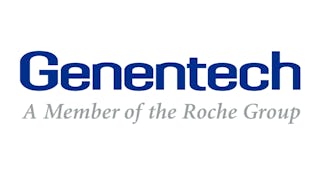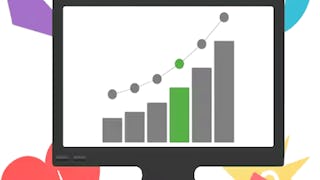The aim of this course is to introduce learners to open-source R packages that can be used to perform clinical data reporting tasks. The main emphasis of the course will be the clinical data flow from raw data (both CRF and non-CRF) to SDTM to ADaM to final outputs. While several open-source tools to complete these tasks will be introduced, the objective of this course is not to become an expert in any of these tools but rather to introduce participants to the broader concepts behind these tasks. That way the tools simply serve as an example of how the underlying concepts could be put into action in code.


您将获得的技能
- R (Software)
- R Programming
- Statistical Reporting
- Clinical Trials
- Clinical Data Management
- Pharmaceuticals
- Data Modeling
- Interactive Data Visualization
- Technical Communication
- Data Integration
- Data Visualization
- Statistical Programming
- Data Transformation
- Data Presentation
- Drug Development
- Shiny (R Package)
- Data Science
- Data Manipulation
要了解的详细信息

添加到您的领英档案
20 项作业
了解顶级公司的员工如何掌握热门技能

该课程共有8个模块
In this module, we will introduce this course and provide a brief outline of what you will be learning. We will provide context on clinical reporting in R and the motivation for the recent shift in industry trends for the support of open-source tools. We will describe the challenges in current statistical programming practices and the benefits of applying open-source tools, as well as provide additional resources to learn more.
涵盖的内容
1个视频1篇阅读材料1个讨论话题
In this module, we will cover several important topics related to Phase 3 clinical trials and clinical data. We will start with a brief introduction to Phase 3 trials and discuss the type of data that is collected during these trials. Following that, we will provide an overview of two data models that are commonly used to handle clinical trial data, namely SDTM and ADaM. Next, we will delve into the process of preparing a data submission package for health authorities, with a specific focus on the Food and Drug Administration (FDA) in the United States. We will explore the requirements and guidelines for submitting clinical trial data to the FDA. Lastly, we will wrap up this module by summarizing our understanding of the clinical data flow, highlighting the key points we have covered throughout the course.
涵盖的内容
6个视频1篇阅读材料1个作业
In this module, we will provide an introduction to Study Data Tabulation Model (or SDTM) by giving context and highlighting the importance of such data models on clinical trials. We will explore different SDTM data mappings for CRF and non-CRF data. Finally, we will provide an outlook on the programming of SDTMs on R.
涵盖的内容
4个视频1个作业
In this module, we explore what are analysis data model (ADaM) datasets, the 3 structures of ADaM, and how to create ADaM in R using Pharmaverse packages.
涵盖的内容
16个视频4篇阅读材料4个作业
In this module, we explore ADaM and R using Pharmaverse packages, one step further. We will focus on the ADaM Occurence Data Structure known as OCCDS using the example Analysis Dataset Adverse Events (ADAE). We'll go over what an OCCDS is, Adverse Events, and how to create ADAE using {admiral} and other R Pharmaverse packages. As you may be going through this training with a hands-on approach, when working in R, please first follow the installation instructions here to ensure you are using the same R version and R packages needed for both the Training and the Quiz at the end. You may do steps 1-6 now : https://hua.dididi.sbs/learn/hands-on-clinical-reporting-using-r/supplement/enxGp/adae-quiz-resources (copy and paste if you need to), then proceed with the training. Once you get to the quiz, then you may start from step 7 on.
涵盖的内容
36个视频2篇阅读材料8个作业
In this module, we introduce the concepts of generating outputs used for regulatory purposes, and the NEST packages in particular. We show how you can use NEST effectively to create and customize your tables, listings, and graphs (TLGs) during clinical reporting and introduce the TLG-Catalog to aid output generation using our packages. We will explain the benefits of open-source and the industry collaboration efforts on clinical reporting.
涵盖的内容
36个视频2个作业
In this module we will discuss benefits of of using interactive data displays for clinical reporting. We will introduce the teal family of R packages and become familiar with the key features this framework offers. Finally, we will learn how to develop a production level interactive application using teal modules for data review, safety and efficacy analyses.
涵盖的内容
26个视频1篇阅读材料4个作业
In this final module we will briefly review the course and suggest next steps in your learning journey.
涵盖的内容
1个视频
位教师



提供方
从 Data Analysis 浏览更多内容
 状态:预览
状态:预览 状态:免费试用
状态:免费试用University of Colorado System
 状态:免费试用
状态:免费试用Johns Hopkins University
人们为什么选择 Coursera 来帮助自己实现职业发展




常见问题
To access the course materials, assignments and to earn a Certificate, you will need to purchase the Certificate experience when you enroll in a course. You can try a Free Trial instead, or apply for Financial Aid. The course may offer 'Full Course, No Certificate' instead. This option lets you see all course materials, submit required assessments, and get a final grade. This also means that you will not be able to purchase a Certificate experience.
When you purchase a Certificate you get access to all course materials, including graded assignments. Upon completing the course, your electronic Certificate will be added to your Accomplishments page - from there, you can print your Certificate or add it to your LinkedIn profile.
Yes. In select learning programs, you can apply for financial aid or a scholarship if you can’t afford the enrollment fee. If fin aid or scholarship is available for your learning program selection, you’ll find a link to apply on the description page.
更多问题
提供助学金,





 中
中


